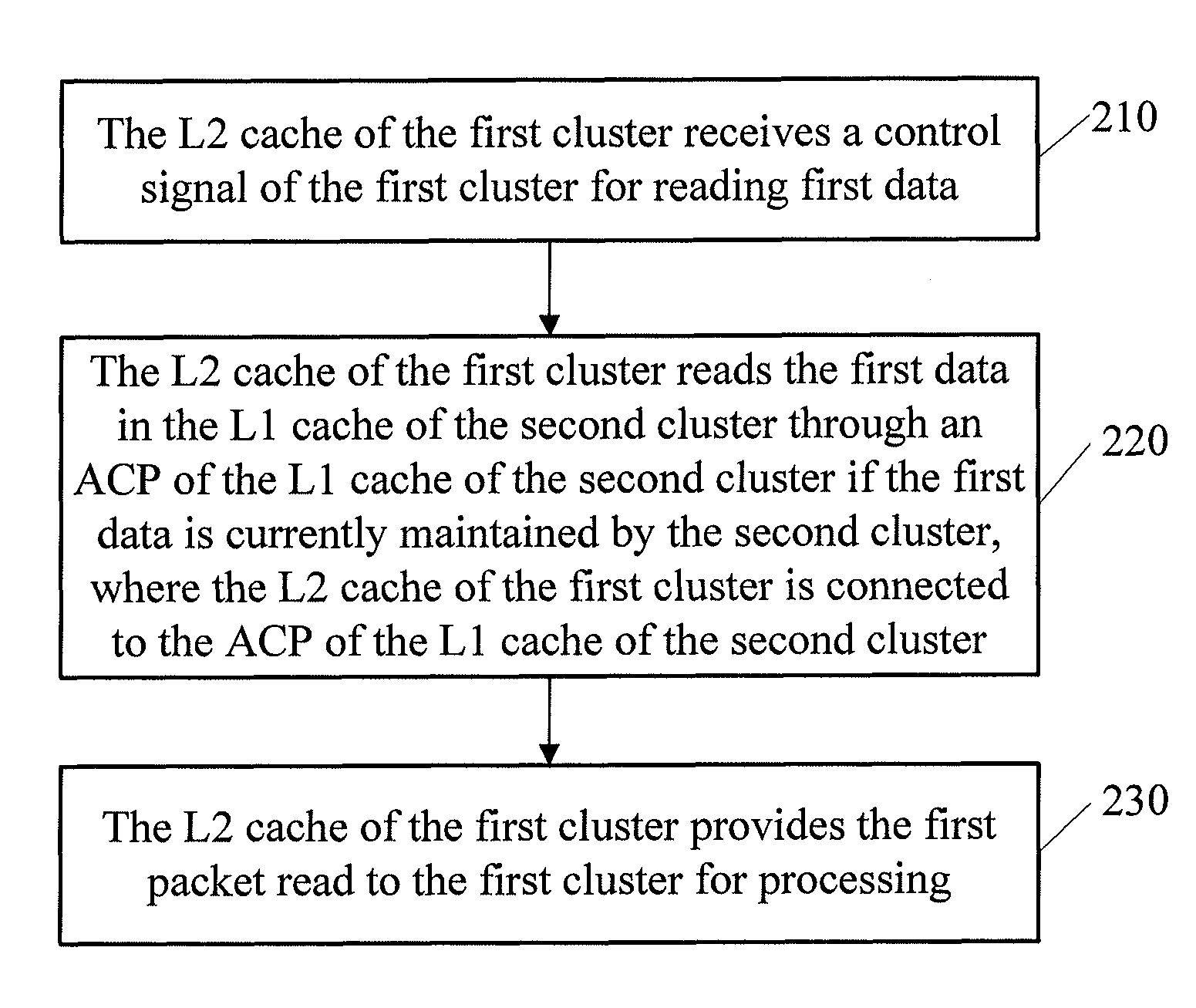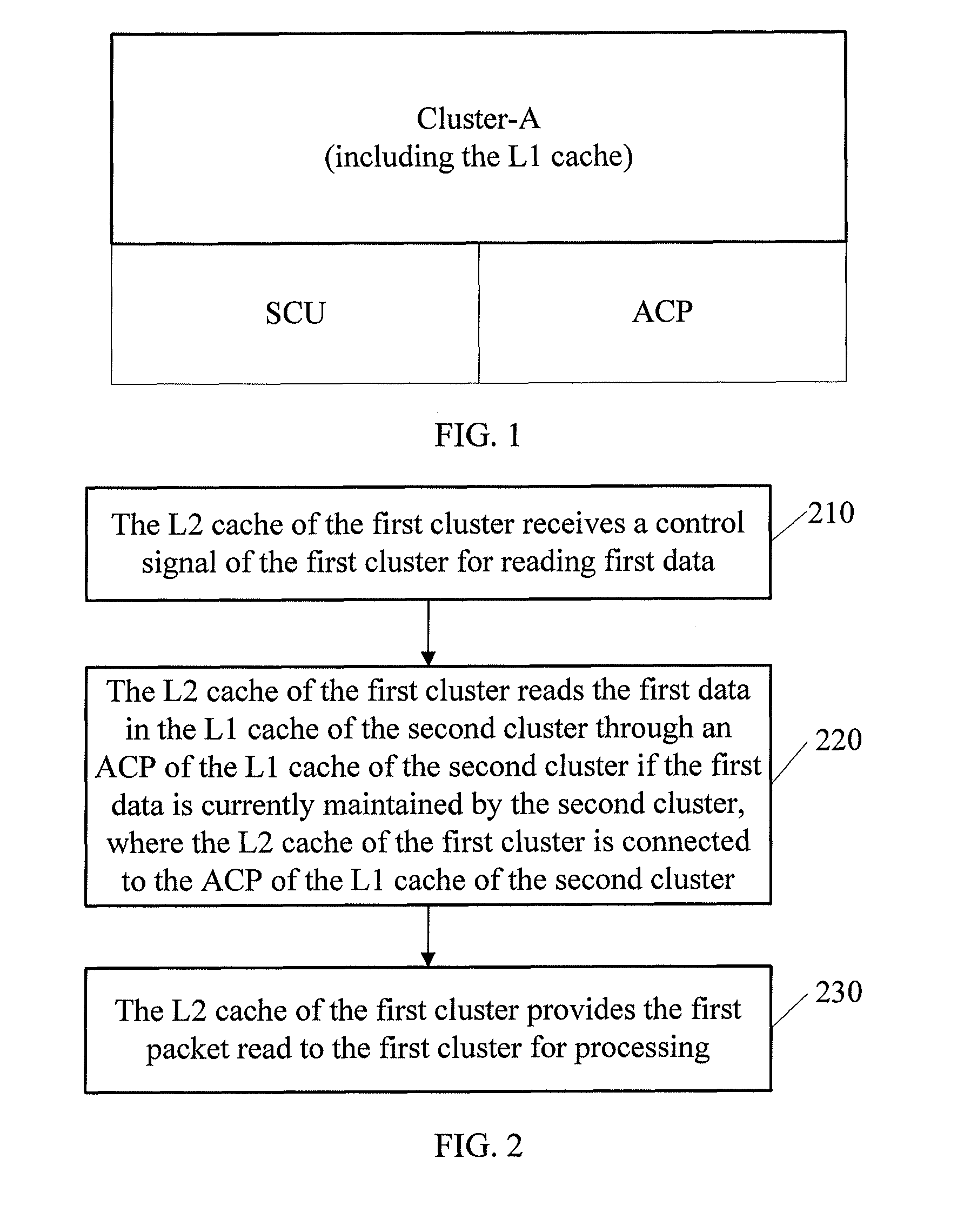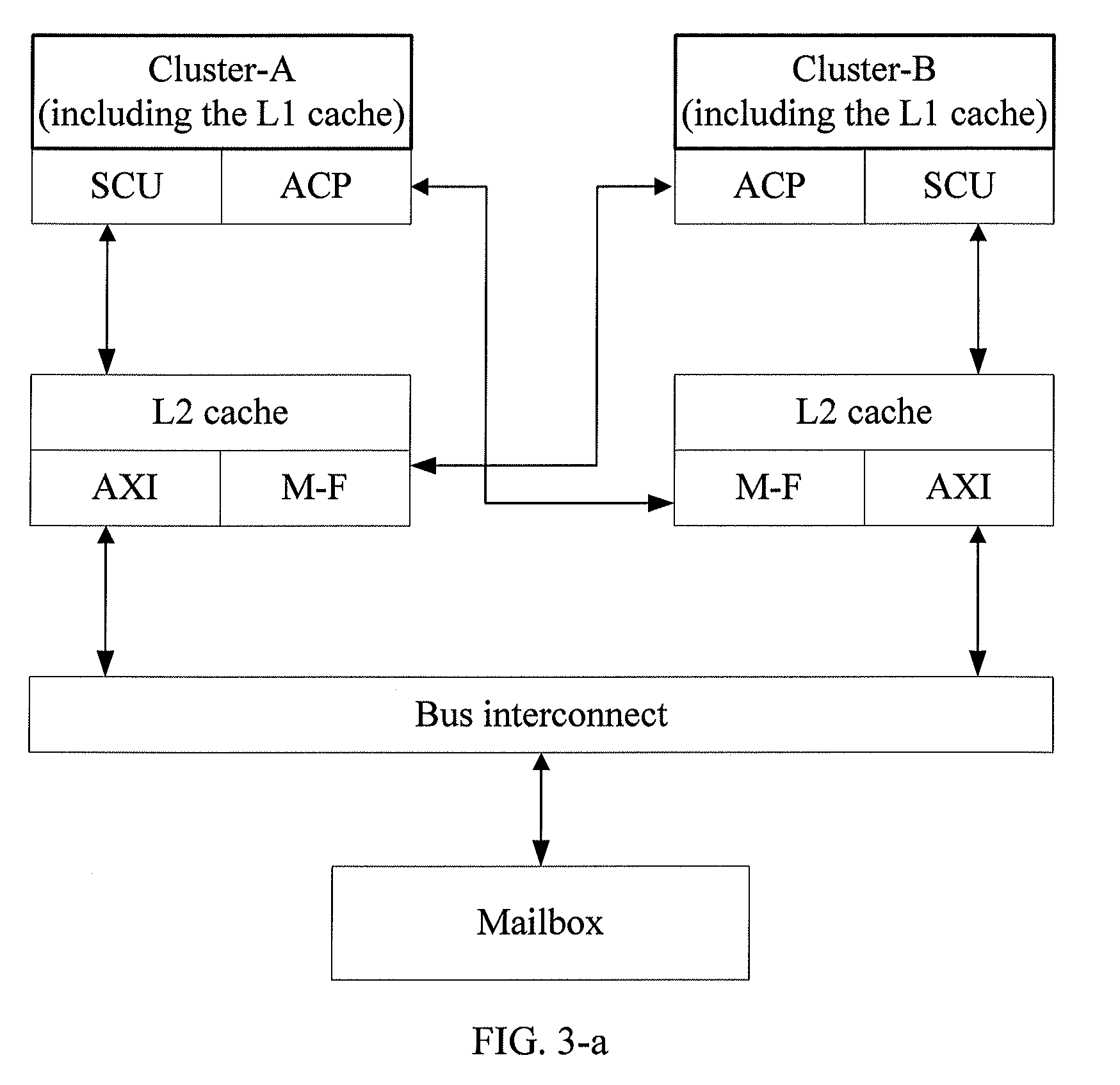Method and apparatus for implementing multi-processor memory coherency
a multi-processor and memory coherency technology, applied in the field of computer technologies, can solve the problems of incoherency between caches, rather inconvenient application of more than four processors, and inability to ensure the validity of data, so as to achieve the effect of ensuring the validity of data
- Summary
- Abstract
- Description
- Claims
- Application Information
AI Technical Summary
Benefits of technology
Problems solved by technology
Method used
Image
Examples
embodiment 1
[0043]The following describes the process of implementing memory coherency of the first cluster, assuming that the multi-processor device in ARM Cortex-A9 architecture includes at least a first cluster and a second cluster which process data jointly, where an L2 cache of the first cluster is responsible for implementing multi-processor memory coherency of the first cluster. As shown in FIG. 2, the method for implementing multi-processor memory coherency may include the following steps:
[0044]210. The L2 cache of the first cluster receives a control signal of the first cluster for reading the first data.
[0045]In an application scenario, when the first cluster needs to process the first data, the first cluster may send a control signal for reading the first data. For example, when the first data is currently maintained by the second cluster, the second cluster may maintain the first data in the L1 cache of the second cluster.
[0046]220. The L2 cache of the first cluster reads the first ...
embodiment 2
[0056]The following description assumes that a multi-processor device in ARM Cortex-A9 architecture includes at least cluster-A and cluster-B which process data jointly.
[0057]In this embodiment, the connection relation between cluster-A and cluster-B of the multi-processor device in this embodiment may be shown in FIG. 3-a. In this architecture, the SCU of cluster-A is connected to the L2 cache of cluster-A; the AXI bus interface of the L2 cache of cluster-A is connected to the system bus; the M-F interface of the L2 cache of cluster-A is connected to the ACP of the L1 cache of cluster-B directly; the SCU of cluster-B is connected to the L2 cache of cluster-B; the AXI bus interface of the L2 cache of cluster-B is connected to the system bus; and the M-F interface of the L2 cache of cluster-B is connected to the ACP of the L1 cache of cluster-A directly. Alternatively, the connection relation between cluster-A and cluster-B of the multi-processor device in this embodiment may be show...
embodiment 3
[0078]This embodiment deals with the process of implementing multi-processor memory coherency of the first cluster, assuming that the multi-processor device in ARM Cortex-A9 architecture includes at least a first cluster and a second cluster which process data jointly, where an L2 cache of the first cluster is responsible for implementing multi-processor memory coherency of the first cluster. In this embodiment, a shared cache is added in the multi-processor device, and the shared cache is connected to the ACP of the L1 cache of each cluster and the L2 cache of each cluster. This shared cache is used to implement multi-processor memory coherency. As shown in FIG. 4, a method for implementing multi-processor memory coherency in another embodiment may include the following steps:
[0079]410. The L2 cache of the first cluster receives a control signal of the first cluster for reading second data.
[0080]In an application scenario, when the first cluster needs to process the second data, th...
PUM
 Login to View More
Login to View More Abstract
Description
Claims
Application Information
 Login to View More
Login to View More - R&D
- Intellectual Property
- Life Sciences
- Materials
- Tech Scout
- Unparalleled Data Quality
- Higher Quality Content
- 60% Fewer Hallucinations
Browse by: Latest US Patents, China's latest patents, Technical Efficacy Thesaurus, Application Domain, Technology Topic, Popular Technical Reports.
© 2025 PatSnap. All rights reserved.Legal|Privacy policy|Modern Slavery Act Transparency Statement|Sitemap|About US| Contact US: help@patsnap.com



